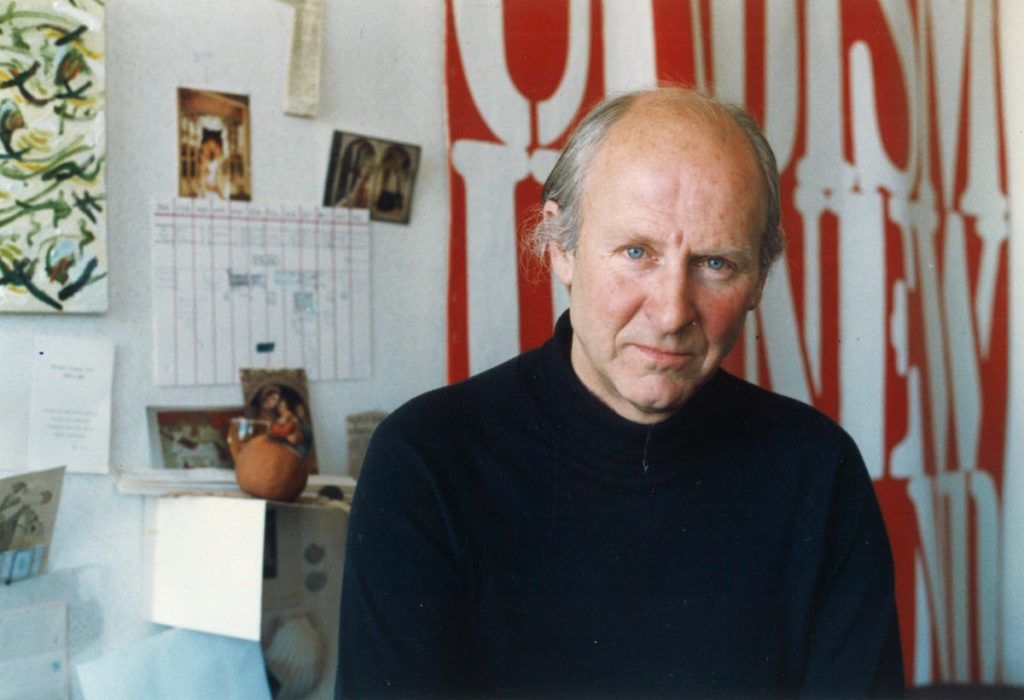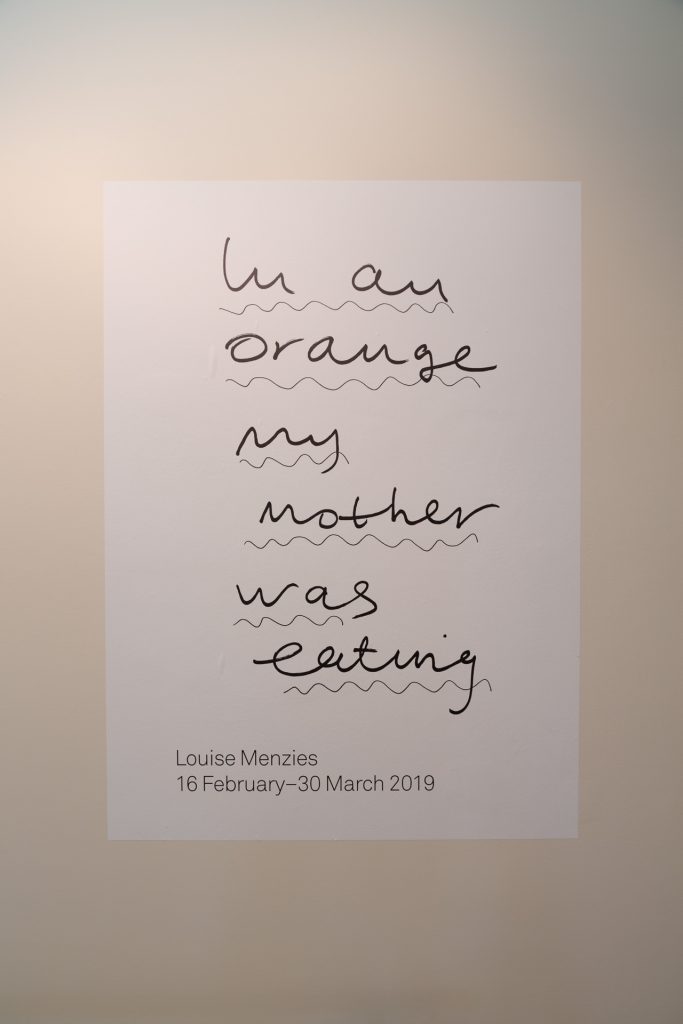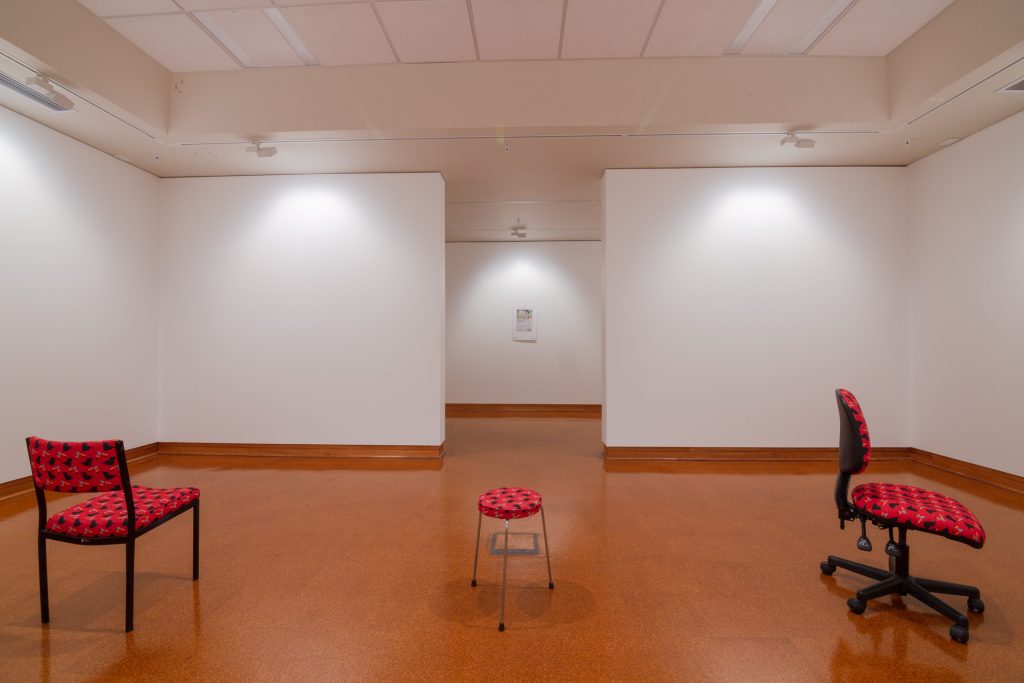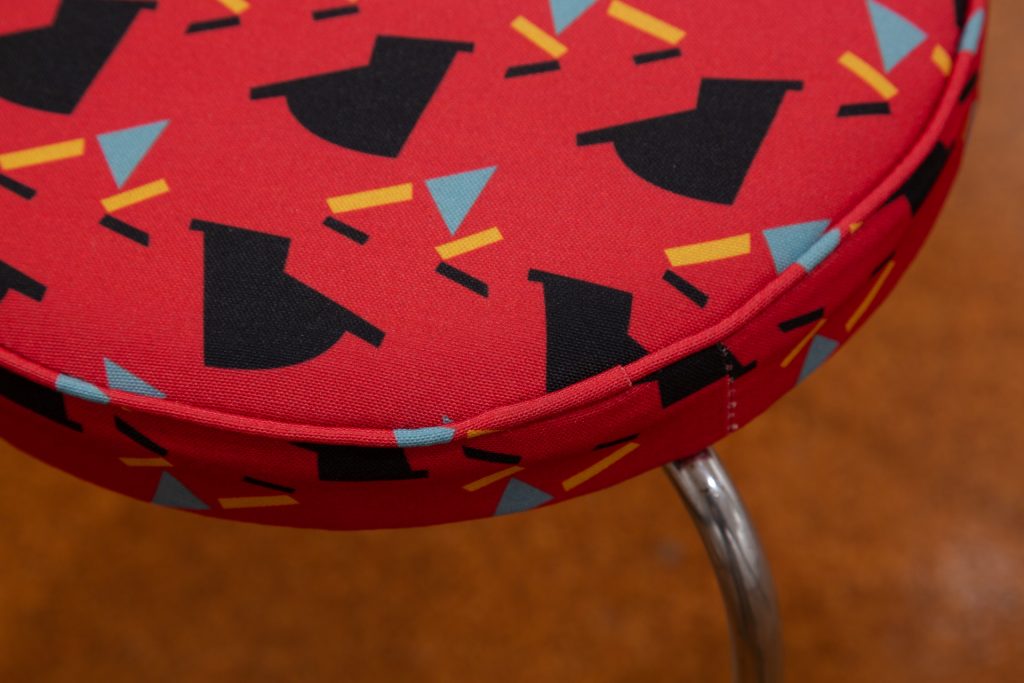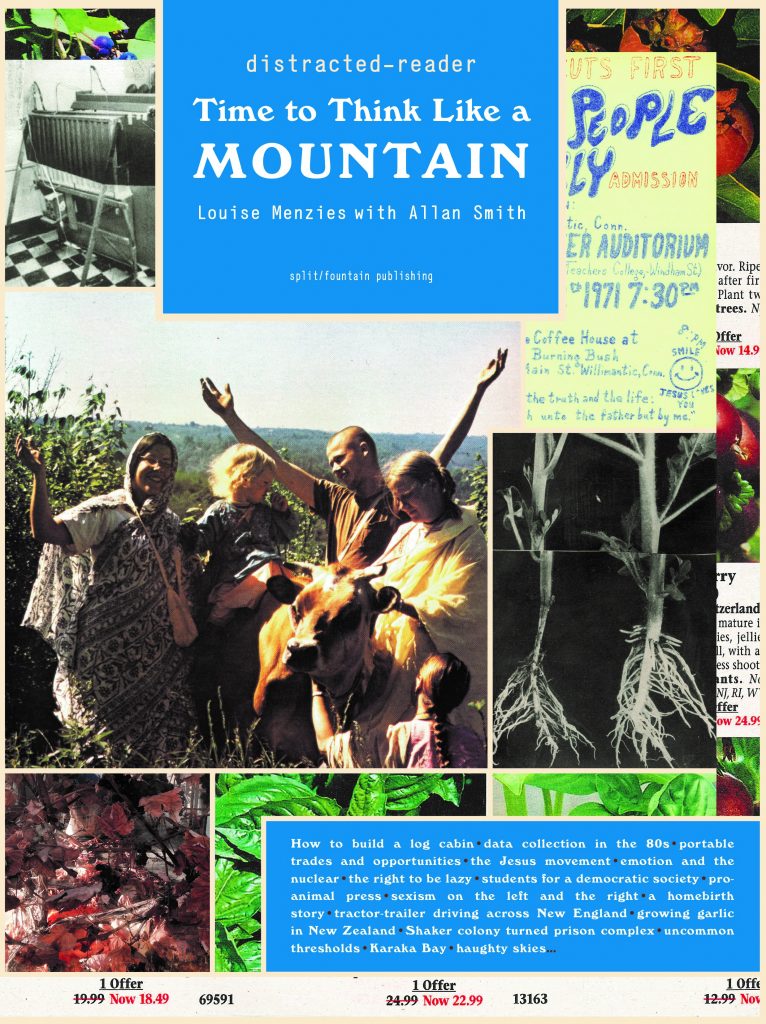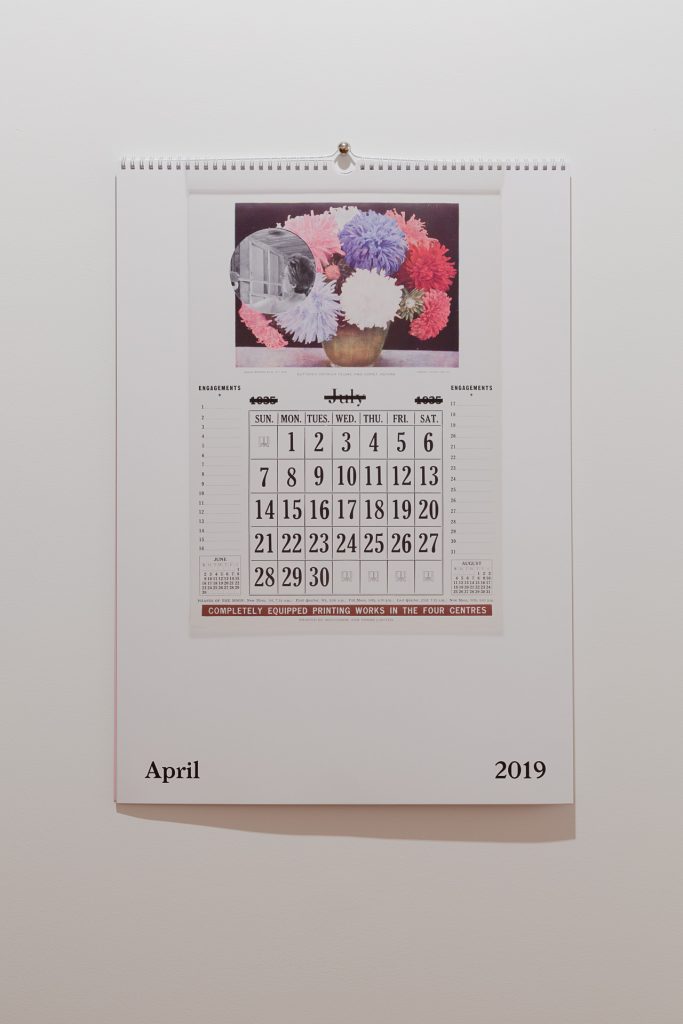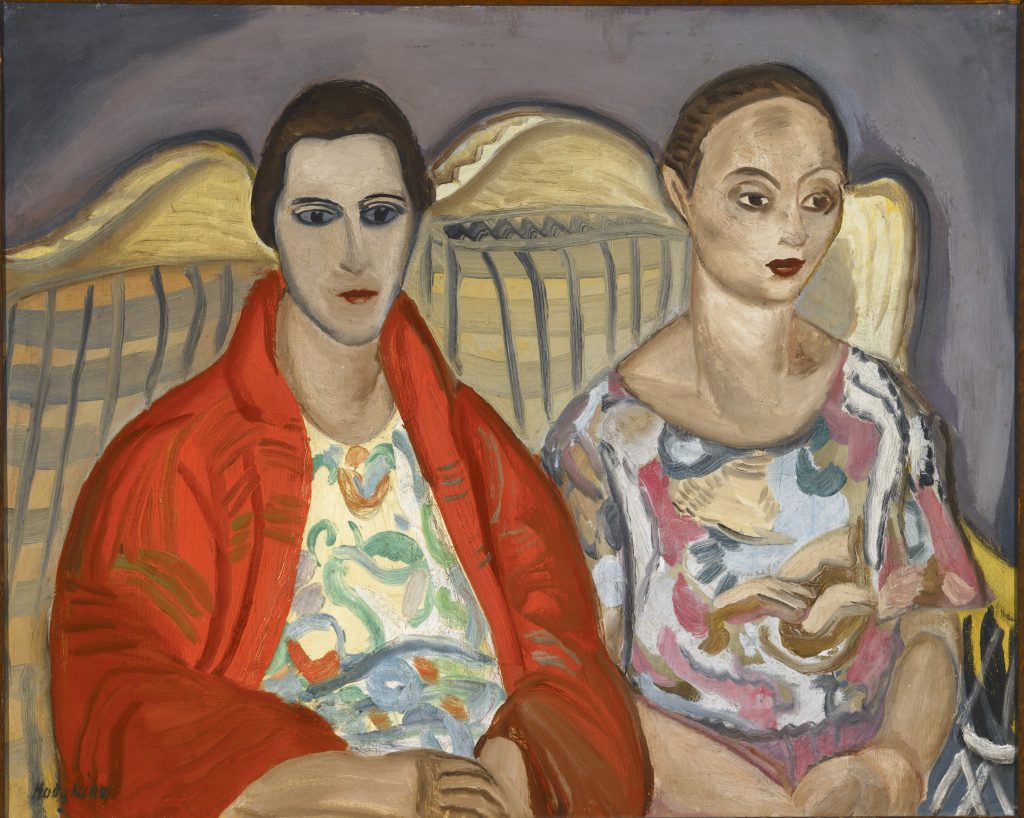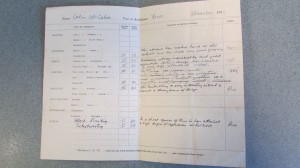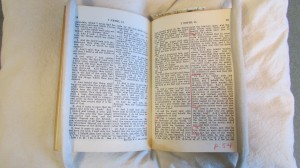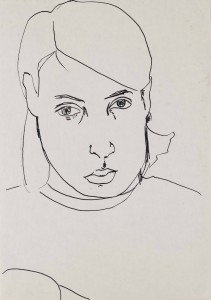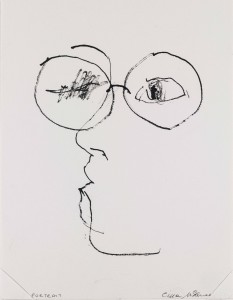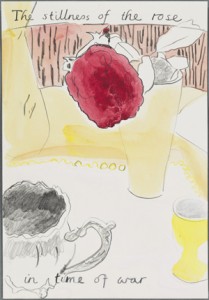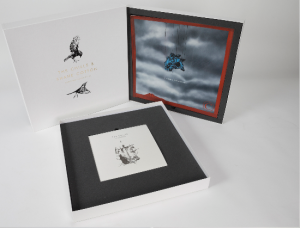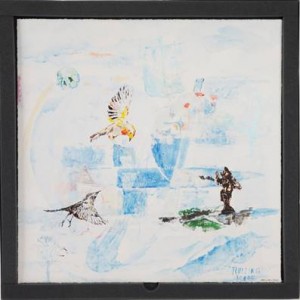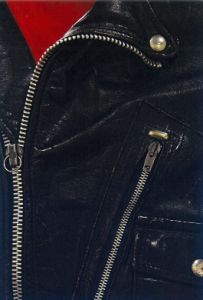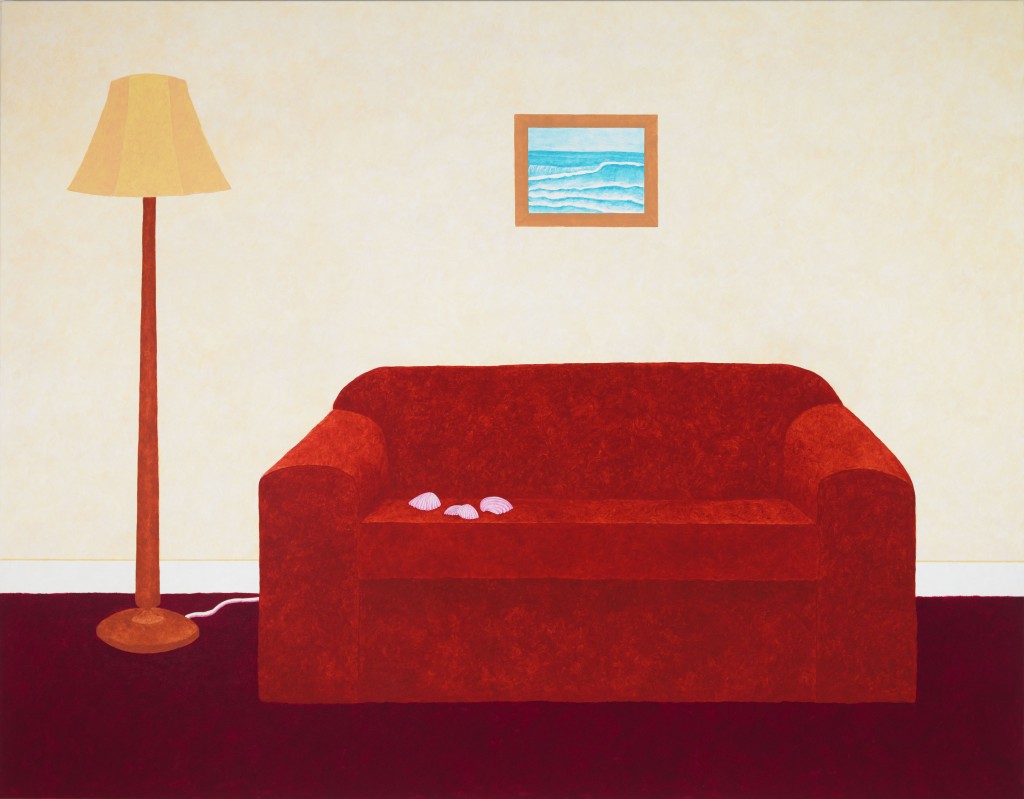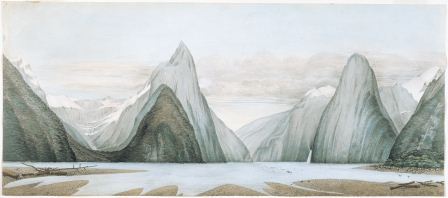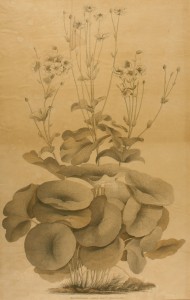Post researched and written by Debbie Gale – Archivist
The exciting discovery of an accomplished watercolour sketchbook within the archives of the Dominican Sisters of Aotearoa New Zealand held by the Hocken, was first assumed to be the work of a pupil at one of the Dominican Schools. Instead, it has been found on closer examination to be that of one of its Sisters, Mary Genevieve.

Hocken Collections, Natural history work book, Susan Downing, Upton Hall. Records of the Dominican Sisters of Aotearoa New Zealand. AG-264-A-019/002. To see detailed image, right click, open in new tab and zoom in.
The first ten Dominican Sisters arrived in Dunedin from Sion Hill Convent in Dublin in 1871, accompanying Bishop Moran. Under the conditions of the agreement, those chosen to move to New Zealand needed to be qualified to teach in both ‘A High School’ and ‘A Poor School’. Sister Mary Genevieve’s maternal aunt, Charlotte (professed as Sister Catherine Hughes in 1857), was part of this first contingent. Indicative that the Sion Hill community sent some of its outstanding members to New Zealand, Sister Catherine had studied under a pupil of Chopin and was a highly gifted musician. She was sister-in-law to Sir Charles Gavan Duffy, Irish Nationalist, journalist, poet and Australian Politician (8th Premier of Victoria 1871-1872). Duffy married her sister Susan Hughes in 1846[1].
The High School, opened very shortly after the Sisters’ arrival in 1871, accepted pupils from all over Dunedin for pianoforte lessons, singing, harp lessons, painting, flower making, art, needlework and languages such as French, Italian, German and Spanish[2].
By 1971, the number of Irish sisters who came out to New Zealand had risen to 80. Like the first contingent, most were from privileged backgrounds, daughters of wealthy landowners who had received an education. Dunedin’s successful immigrants sent their daughters to the Dominican Sisters for two reasons – to receive a good Catholic education and to acquire the ‘accomplishments’ (cultural studies of music and art and modern languages)[3].
Susan Downing appeared to fit the mould of a Dominican Sister perfectly. She had an educated, upper class background and she was accomplished in the arts. These attributes are evidenced both through her beautiful sketchbook, and from information held by the Dominican Sisters themselves.
By accessing genealogy resources, making enquiries about Downing from the Dominican Sisters’ Archive and following up on clues in the sketchbook, we can piece together some of Susan’s early life in England.
England Census 1861:
Six-year-old Susan J. Downing is listed in the Downing household in the Parish of Birkenhead. Her estimated birth year is 1855 and her birthplace is listed as Birkenhead, England. She appears in the England and Wales birth index as Susan Jane Downing.
Father Samuel was born in Ireland about 1820, he was a physician, surgeon and general practitioner. Mother Marianne was also born in Ireland about 1819. The family appears to be prosperous, with the household consisting of five siblings and two household staff whose occupations are listed as ‘domestic servants’.
England Census 1871:
There are two entries for Susan. She is listed within her household census, and also as a scholar at Upton Hall.
Upton Hall, then a Catholic convent school in Wirral, Cheshire, lies about 10kms away from Birkenhead. It was ‘designed to produce accomplished young ladies’. This is where Susan would have begun her sketchbook, in 1876, at the age of 21.

Hocken Collections, Natural history work book, Susan Downing, Upton Hall. Records of the Dominican Sisters of Aotearoa New Zealand. AG-264-A-019/002. To see detailed image, right click, open in new tab and zoom in.
The Downing household now has three domestic staff whose occupations are listed as ‘groom (domestic servant)’, ‘cook’ and ‘housemaid’. Their immediate neighbours are an attorney and broker. William, the eldest son, is a merchant’s apprentice and two further sons a medical student and scholar.
No record of Susan is found in the 1881 or 1891 England census returns so we may assume that she had left England by this time. Susan’s personal record held by the Dominican Sisters indicates that she had been educated in Holland, France and in Dublin at the Dominican College, Sion Hill and arrived in Dunedin directly from Dublin in 1892.
Sadly, no Irish census information for these years survives as the original returns were pulped during the First World War, probably because of the paper shortage. She left Upton Hall at some point after 1876 and moved to Dublin, but without the Irish census returns it is difficult to pin dates down.
Moving to the other side of the globe:
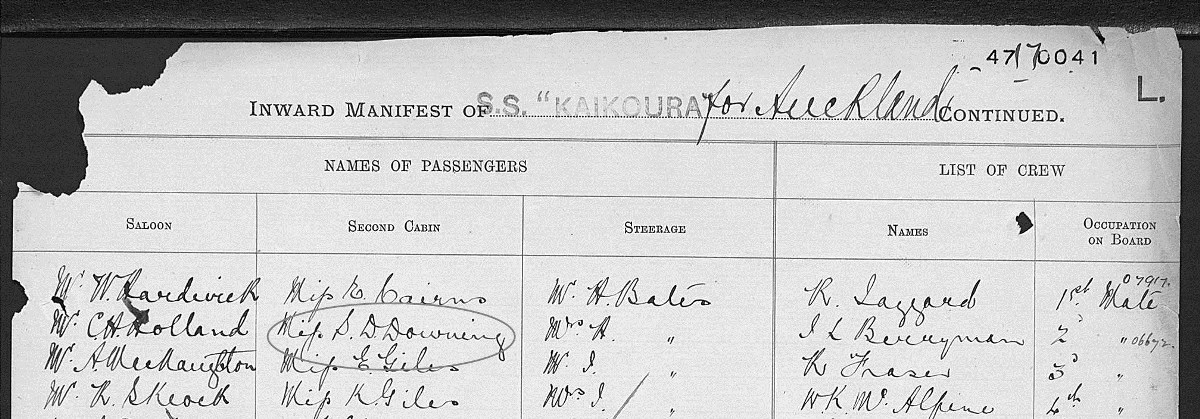
Archives New Zealand Passenger lists from 1892 show that Susan made the long voyage to New Zealand at the age 37, by herself, on the ‘S.S. Kaikoura’.
The journey was not without incident. Both the Otago Daily Times (15 July 1892) and Hobart Mercury (11 July 1892) reported on the ‘Kaikoura’ embarking passengers of a ship wrecked on its voyage to Melbourne, as well as the terrible weather conditions encountered by its passengers:
On the 6th June at Cape Verde, Africa, the ‘Kaikoura’ embarked passengers of the liner ‘Port Douglas’, which had been wrecked on the voyage to Melbourne. The passengers also encountered ‘terrific seas’ and ‘rain, hail and sleet were frequent…traversing the Southern Ocean’. However, ‘The usual concert balls etc., were organised to enliven the monotony…they were entered into heartily by all on board’. I wonder, did convent girl Susan join in these proceedings?
Received into the Dominican Sisters on 15th January 1893, Susan took the name Sister Mary Genevieve and was professed on 8 November 1894. Dunedin electoral rolls of 1893 and 1896 list her teaching at St Dominic’s Priory on Dowling Street. Records show she eventually reached the rank of sub prioress in 1910. Her death is given as 19 September 1923 aged 69.
For all that we can piece together the recorded fragments of Sister Mary Genevieve’s early life; there are a few questions that will remain unanswered:
What made Susan decide to move to the opposite side of the world, on her own, at 37 years of age? It seems likely that she decided to follow in her Aunt Charlotte’s footsteps and join her as a Dominican Sister, but what was her spur? Her parents would have been in their 70s at this point, maybe they had died and she wanted a fresh start?
According to her death notice, her forte was music, and information from the Dominican’s own records describes her as an ‘excellent linguist, speaking and reading several tongues’. There appears to be no mention of her artistic gifts, however, and her sketchbook remains sadly unfinished. Did she simply decide to discontinue her art once she arrived in New Zealand, or maybe she was just too busy with her teaching and religious duties? This seems a shame, when we consider how evidently she was once attached to her sketchbook, so lovingly crafted and cherished, a travelling companion on her long journey overseas.
[1] McCarthy, 19-20
[2] Collins, 78
[3] Collins, 81-82
Sources:
Collins, Jenny. Hidden lives : The teaching and religious lives of eight Dominican sisters, 1931-1961: A thesis submitted in partial fulfilment of requirements for the degree of Master of Education at Massey University, Palmerston North. 2001
McCarthy, Mary Augustine. Star in the South : The centennial history of the New Zealand Dominican Sisters. Dunedin St Dominic’s Priory, 1970
New Zealand Dominican Sisters Archives
Rombouts. Michael : Death notices in the New Zealand Tablet May 1873 to Apr 1996. Dunedin N.Z. : M.J.Rombouts 2000
Rombouts. Michael : Catholic death notices in the Otago Daily Times 1861-1950. Dunedin N.Z. : M.J.Rombouts 1998
Upton Hall School Census 1871. (Retrieved August 2015 ‘http://history.uptonhallschool.co.uk’)
Upton Hall School website (Retrieved August 2015, ‘http://www.uptonhallschool.co.uk/’)
England census returns (Retrieved August 2015. ‘Ancestry’)
England and Wales birth index (Retrieved October 2015 ‘Ancestry’)
New Zealand Tablet, 1923
New Zealand, Archives New Zealand, Passenger lists 1839-1973 (Retrieved August 2015. ‘familysearch.org’)
The Mercury, Hobart 11 July 1892 (Retrieved September 2015. ‘Trove’ http://trove.nla.gov.au/ndp/del/article/13295915)
Otago Daily Times, 15 July 1892 (Retrieved August 2015. ‘Papers Past’)
New Zealand Electoral Rolls, 1893, 1896


